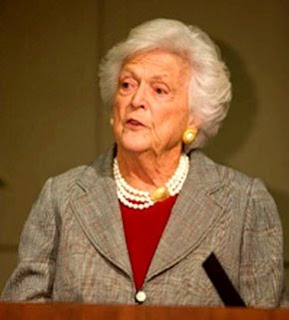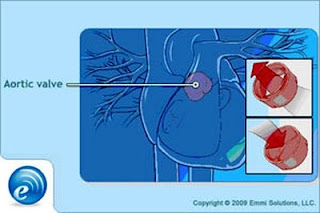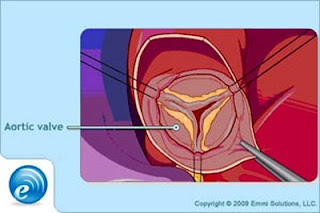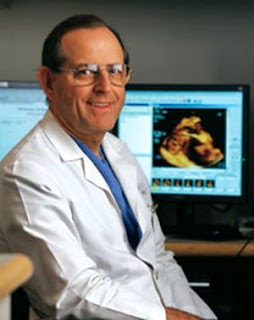
Technical information:
Household data: (202) 691-6378 USDL 09-0224
http://www.bls.gov/cps/
Establishment data: (202) 691-6555 Transmission of material in this release
http://www.bls.gov/ces/ is embargoed until 8:30 A.M. (EST),
Media contact: (202) 691-5902 Friday, March 6, 2009.
THE EMPLOYMENT SITUATION: FEBRUARY 2009
Nonfarm payroll employment continued to fall sharply in February (-651,000), and the unemployment rate rose from 7.6 to 8.1 percent, the Bureau of Labor Statistics of the U.S. Department of Labor reported today. Payroll employment has declined by 2.6 million in the past 4 months. In February, job losses were large and widespread across nearly all major industry sectors.
Unemployment (Household Survey Data)
The number of unemployed persons increased by 851,000 to 12.5 million in February, and the unemployment rate rose to 8.1 percent. Over the past 12 months, the number of unemployed persons has increased by about 5.0 million, and the unemployment rate has risen by 3.3 percentage points. (See table A-1.)
The unemployment rate continued to trend upward in February for adult men (8.1 percent), adult women (6.7 percent), whites (7.3 percent), blacks (13.4 percent), and Hispanics (10.9 percent). The jobless rate for teenagers was little changed at 21.6 percent. The unemployment rate for Asians was 6.9 percent in February, not seasonally adjusted. (See tables A-1, A-2, and A-3.)
Among the unemployed, the number of job losers and persons who completed temporary jobs increased by 716,000 to 7.7 million in February. This measure has grown by 3.8 million in the last 12 months. (See table A-8.)
The number of long-term unemployed (those jobless for 27 weeks or more) increased by 270,000 to 2.9 million in February. Over the past 12 months, the number of long-term unemployed was up by 1.6 million. (See table A-9.)
- 2 -
Table A. Major indicators of labor market activity, seasonally adjusted (Numbers in thousands)
_______________________________________________________________________________
| | |
| Quarterly | |
| averages | Monthly data | Jan.-
Category |_________________|__________________________| Feb.
| | | | | | change
| III | IV | Dec. | Jan. | Feb. |
| 2008 | 2008 | 2008 | 2009 | 2009 |
__________________|________|________|________|________|________|________
|
HOUSEHOLD DATA | Labor force status
|_____________________________________________________
| | | | | |
Civilian labor force .| 154,650| 154,648| 154,447| 153,716| 154,214| 498
Employment ...........| 145,299| 144,046| 143,338| 142,099| 141,748| -351
Unemployment .........| 9,350| 10,602| 11,108| 11,616| 12,467| 851
Not in labor force....| 79,460| 80,177| 80,588| 81,023| 80,699| -324
|________|________|________|________|________|________
|
| Unemployment rates
|_____________________________________________________
| | | | | |
All workers .......| 6.0| 6.9| 7.2| 7.6| 8.1| 0.5
Adult men .........| 5.8| 6.8| 7.2| 7.6| 8.1| .5
Adult women .......| 5.0| 5.6| 5.9| 6.2| 6.7| .5
Teenagers .........| 19.7| 20.7| 20.8| 20.8| 21.6| .8
White .............| 5.4| 6.3| 6.6| 6.9| 7.3| .4
Black or African | | | | | |
American ..........| 10.7| 11.5| 11.9| 12.6| 13.4| .8
Hispanic or Latino | | | | | |
ethnicity ........ | 7.8| 8.9| 9.2| 9.7| 10.9| 1.2
|________|________|________|________|________|________
|
ESTABLISHMENT DATA | Employment
|_____________________________________________________
| | | | | |
Nonfarm employment.| 137,004| 135,727| 135,074|p134,419|p133,768| p-651
Goods-producing (1)| 21,343| 20,803| 20,532| p20,153| p19,877| p-276
Construction ......| 7,170| 6,949| 6,841| p6,723| p6,619| p-104
Manufacturing .....| 13,388| 13,062| 12,902| p12,645| p12,477| p-168
Service-providing(1| 115,661| 114,924| 114,542|p114,266|p113,891| p-375
Retail trade (2) | 15,331| 15,127| 15,038| p14,999| p14,960| p-40
Professional and | | | | | |
business services | 17,730| 17,485| 17,356| p17,222| p17,042| p-180
Education and health| | | | | |
services .........| 18,932| 19,035| 19,080| p19,123| p19,149| p26
Leisure and | | | | | |
hospitality .....| 13,452| 13,348| 13,304| p13,275| p13,242| p-33
Government ........| 22,543| 22,538| 22,532| p22,563| p22,572| p9
|________|________|________|________|________|________
|
| Hours of work (3)
|_____________________________________________________
| | | | | |
Total private .....| 33.6| 33.4| 33.3| p33.3| p33.3| p0.0
Manufacturing .....| 40.8| 40.2| 39.9| p39.8| p39.6| p-.2
Overtime ..........| 3.6| 3.2| 2.9| p2.8| p2.6| p-.2
|________|________|________|________|________|________
|
| Indexes of aggregate weekly hours (2002=100)(3)
|_____________________________________________________
| | | | | |
Total private .....| 106.1| 104.1| 103.2| p102.6| p101.9| p-0.7
|________|________|________|________|________|________
|
| Earnings (3)
| _____________________________________________________
Average hourly earnings,| | | | | |
total private ......... | $18.16| $18.34| $18.40| p$18.44| p$18.47| p$0.03
Average weekly earnings,| | | | | |
total private ......... | 610.90| 612.55| 612.72| p614.05| p615.05| p1.00
_______________________ |________|________|________|________|________|________
1 Includes other industries, not shown separately.
2 Quarterly averages and the over-the-month change are calculated using
unrounded data.
3 Data relate to private production and nonsupervisory workers.
p = preliminary. - 3 -
Total Employment and the Labor Force (Household Survey Data)
The civilian labor force participation rate was about unchanged at 65.6 percent. The employment-population ratio, at 60.3 percent in February, continued to trend down. The ratio has declined by 2.4 percentage points over the year. (See table A-1.)
In February, the number of persons who worked part time for economic reasons (sometimes referred to as involuntary part-time workers) rose by 787,000, reaching 8.6 million. The number of such workers rose by 3.7 million over the past 12 months. This category includes persons who would like to work full time but were working part time because their hours had been cut back or because they were unable to find full-time jobs. (See table A-5.)
Persons Not in the Labor Force (Household Survey Data)
About 2.1 million persons (not seasonally adjusted) were marginally attached to the labor force in February, 466,000 more than a year earlier. These individuals wanted and were available for work and had looked for a job sometime in the prior 12 months. They were not counted as unemployed because they had not searched for work in the 4 weeks preceding the survey. Among the marginally attached, there were 731,000 discouraged workers in February, up by 335,000 from a year earlier. Discouraged workers are persons not currently looking for work because they believe no jobs are available for them. The other 1.3 million persons marginally attached to the labor force in February had not searched for work in the 4 weeks preceding
the survey for reasons such as school attendance or family responsibilities. (See table A-13.)
Industry Payroll Employment (Establishment Survey Data)
Total nonfarm payroll employment dropped by 651,000 in February. Since the recession began in December 2007, about 4.4 million jobs have been lost, with more than half (2.6 million) of the decrease occurring in the last 4 months. In February, employment declined in most major industry sectors, with the largest losses occurring in professional and business services, manufacturing, and construction. Health care continued to add jobs over the month. (See table B-1.)
Employment in professional and business services fell by 180,000 in February. The temporary help industry lost 78,000 jobs over the month. Since December 2007, temporary help employment has declined by 686,000, or 27 percent. In February, job declines also occurred in services to buildings and dwellings (-17,000), architectural and engineering services (-16,000), and business support services (-12,000).
Widespread job losses continued in manufacturing in February (-168,000). The majority of the decline occurred in durable goods industries (-132,000), with the largest decreases in fabricated metal products (-28,000) and machinery (-25,000). Employment in nondurable goods manufacturing declined by 36,000 over the month.
The construction industry lost 104,000 jobs in February. Employment in the industry has fallen by 1.1 million since peaking in January 2007. Two-fifths of that decline occurred over the last 4 months. Employment fell sharply in both the residential and nonresidential components of the industry in February.
Employment in truck transportation declined by 33,000 in February; the industry has lost 138,000 jobs since the start of the recession in December 2007. Nearly two-thirds of the decline (-88,000) occurred over the last 4 months. The information industry continued to lose jobs (-15,000). Over the last 4 months, employment in the industry has decreased by 76,000, with about two-fifths of the decline occurring in publishing.
- 4 -
Employment in financial activities continued to decline in February (-44,000). The number of jobs in this industry has dropped by 448,000 since an employment peak in December 2006, with half of this loss occurring in the past 6 months. In February, job losses occurred in real estate (-11,000); credit intermediation (-11,000); and securities, commodity contracts, and investments (-8,000).
Retail trade employment fell by 40,000 over the month and has declined by 608,000 since December 2007. In February, employment decreased in automobile dealerships (-9,000), sporting goods (-9,000), furniture and home furnishing stores (-8,000), and building material and garden supply stores (-7,000). Employment in wholesale trade fell by 37,000 over the month, with nearly all of the decline occurring in durable goods.
Employment in leisure and hospitality continued to trend down over the month (-33,000), with about half of the decrease in the accommodation industry (-18,000).
Health care continued to add jobs in February, with a gain of 27,000. Job growth occurred in ambulatory health care (16,000) and in hospitals (7,000).
The change in total nonfarm employment for December was revised from -577,000 to -681,000 and the change for January was revised from -598,000 to -655,000. Monthly revisions result from additional sample reports and the monthly recalculation of seasonal factors.
Weekly Hours (Establishment Survey Data)
In February, the average workweek for production and nonsupervisory workers on private nonfarm payrolls was 33.3 hours for the third month in a row. Both the manufacturing workweek and factory overtime decreased by 0.2 hour over the month to 39.6 and 2.6 hours, respectively. (See table B-2.)
The index of aggregate weekly hours of production and nonsupervisory workers on private nonfarm payrolls fell by 0.7 percent in February. The manufacturing index declined by 2.0 percent over the month. (See table B-5.)
Hourly and Weekly Earnings (Establishment Survey Data)
In February, average hourly earnings of production and nonsupervisory workers on private nonfarm payrolls rose by 3 cents, or 0.2 percent, seasonally adjusted. Over the past 12 months, average hourly earnings increased by 3.6 percent, and average weekly earnings rose by 2.1 percent. (See table B-3.)
______________________________
The Employment Situation for March 2009 is scheduled to be released on Friday, April 3, at 8:30 A.M. (EDT).












